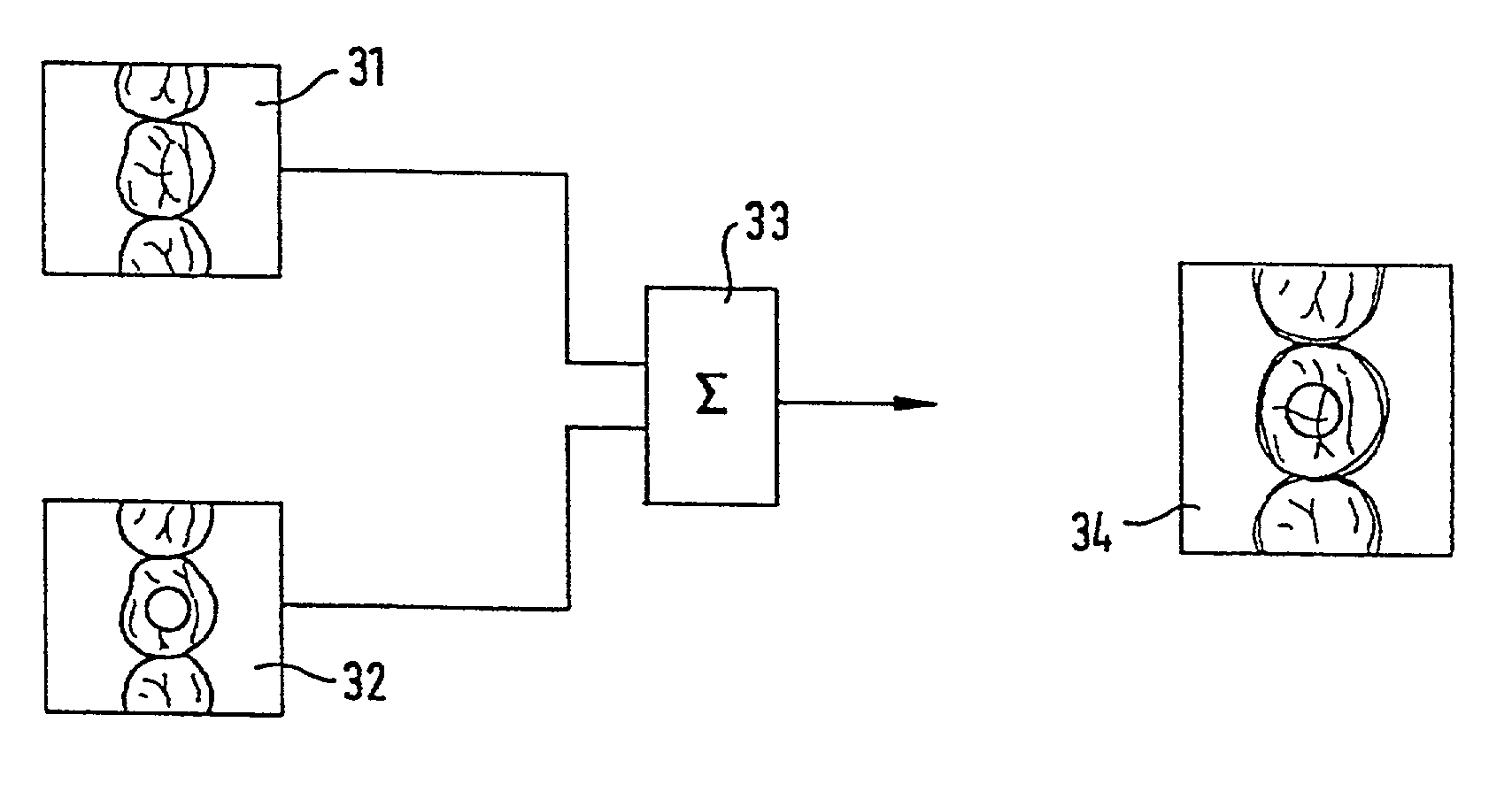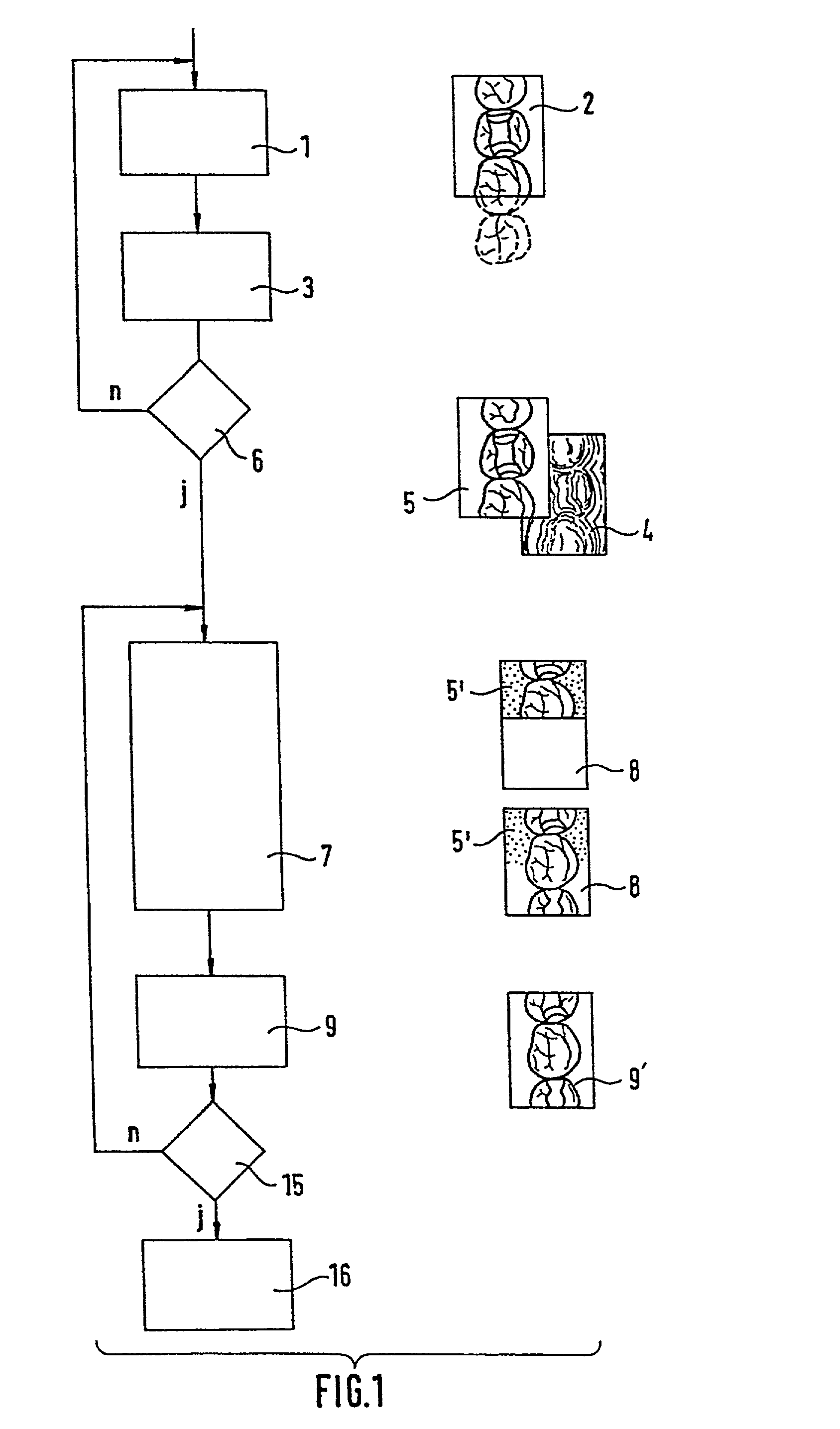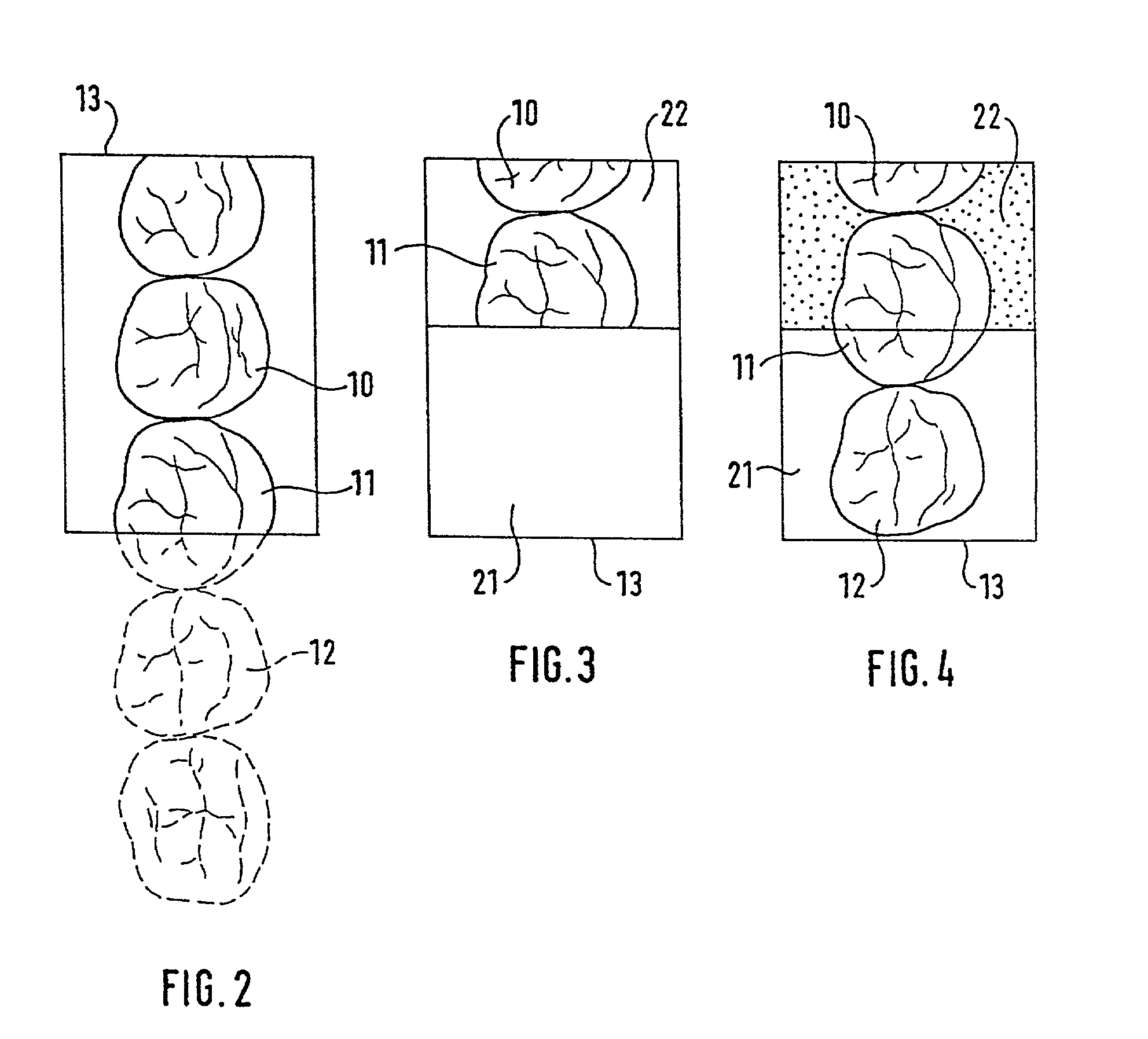Method for detecting and representing one or more objects, for example teeth
a technology for detecting objects and objects, applied in boring tools, dental prosthetics, television systems, etc., to achieve the effect of improving recognition accuracy
- Summary
- Abstract
- Description
- Claims
- Application Information
AI Technical Summary
Benefits of technology
Problems solved by technology
Method used
Image
Examples
Embodiment Construction
[0032]The first recording, already described in EP 0 250 993 B1, is initiated by a search phase preceding the actual measurement operation. This process is shown in accordance with the flow diagram from FIG. 1. In this search phase 1, a measurement camera initially operates like a conventional video system. The tooth part which appears in the recording window is registered by an imaging optical system and sensor, and is represented on a monitor as a standard television image 2. The observed tooth is illuminated by the camera for the purpose of spatial measurement, to be precise with a grid-like reference pattern. However, this reference pattern should not also appear on the search image, since the actual image content is thereby superposed. Therefore, the pattern is eliminated. The camera is oriented using the video search image in such a way that the measurements required for the measurement operation can be carried out successfully. If the production of a fitting for a tooth recon...
PUM
 Login to View More
Login to View More Abstract
Description
Claims
Application Information
 Login to View More
Login to View More - R&D
- Intellectual Property
- Life Sciences
- Materials
- Tech Scout
- Unparalleled Data Quality
- Higher Quality Content
- 60% Fewer Hallucinations
Browse by: Latest US Patents, China's latest patents, Technical Efficacy Thesaurus, Application Domain, Technology Topic, Popular Technical Reports.
© 2025 PatSnap. All rights reserved.Legal|Privacy policy|Modern Slavery Act Transparency Statement|Sitemap|About US| Contact US: help@patsnap.com



